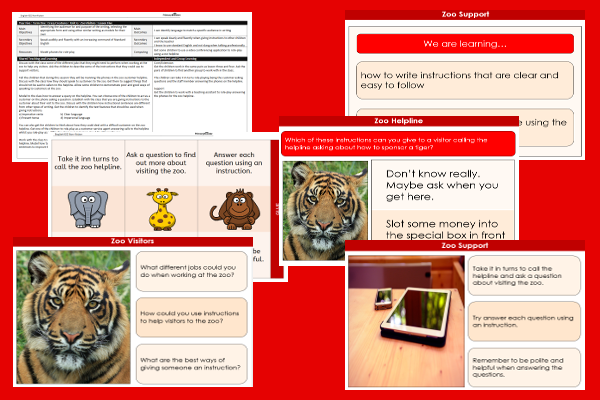Lesson Five – Zoo Helpline

This English teaching pack for Key Stage Two gets the children to role-play acting as a customer service agent to answer queries about a zoo using instructions to provide visitors with information about animals and other facilities.
The class can identify and explain how to use Standard English when talking professionally to visitors to a zoo to answer their queries.
Download this teaching pack including a lesson plan, classroom activities and an interactive presentation to teach the children to role-play acting as a customer service agent to answer queries about a zoo using instructions to provide visitors with information about animals and other facilities
Activities in this teaching pack include a table display card to use role-play to model how to use instructions and Standard English to illustrate how to answer questions about a zoo visit to provide visitors with information about animals and other facilities.
The interactive presentation gets the children to explore how to role-play acting as a customer service agent to answer queries about a zoo using instructions.
This lesson is part of an English scheme of work to get the children to read and write different instructions that can be used to support visitors to a zoo. There are teaching activities for shared learning, differentiated worksheets to support independent learning and interactive presentations to introduce concepts and key skills.
-

Digit Combinations
Practise building and comparing a range of numbers by combining and matching sets of digits with different number values
-

Letter Strings Words Sums
Learn the meanings and practise spelling words with common letter strings to work with when composing example sentences on different topics and themes
-

Town Flag
Investigate and practise how to create different graphic shapes that can be utilised when producing a flag representing the local community
-

Three Digit Values
Investigate and compare the place value of the matching sets of digits in numbers to one thousand to indicate their hundreds, tens and ones values
